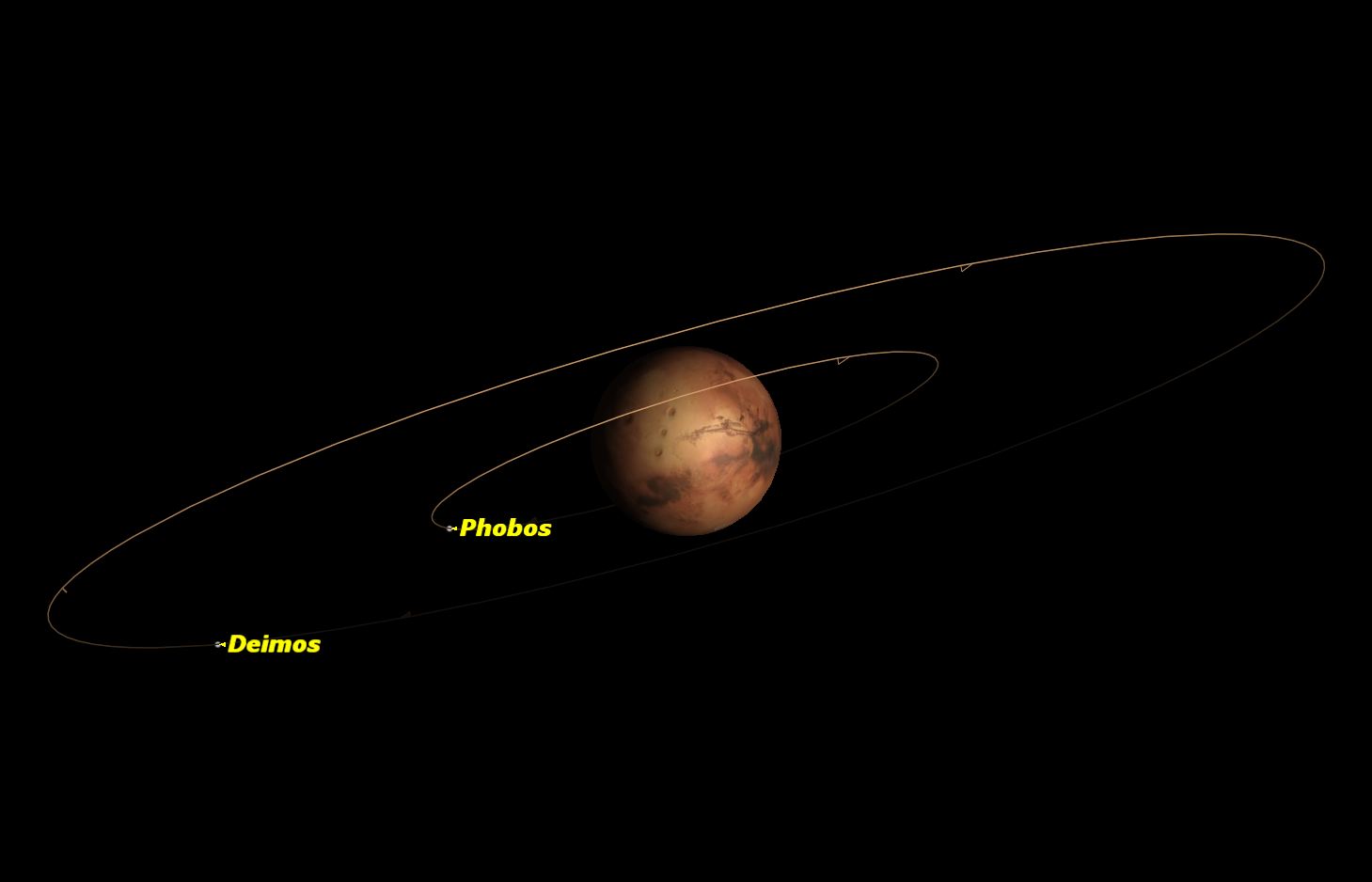
See Mars shining near a crescent moon tonight (Nov. 25).
This evening, look low near the west-southwest horizon about an hour after sunset for a slender (14 percent illuminated) crescent moon. Mars will sit about 9 degrees to the left of the moon. The Red Planet is now setting about 3.5 hours after sundown. (For reference, your clenched fist is roughly equal to 10 degrees when held at arm’s length, so Mars will appear nearly “one fist” from the moon.)
Marsis relatively dim this season, but it’s also the only reasonably bright object glimmering into view low in the southwest at dusk. The Red Planet is still bright enough to stand out prominently among the faint star fields in eastern Sagittarius, and the planet has now retreated to a distance of 168 million miles (270 million km) from Earth. [Best Night Sky Events of November 2014 (Images)]
Back in the spring, Mars was a dazzling yellow-orange light visible low in the eastern sky just after sundown. On April 8, Mars was opposite the sun in Earth's sky and on April 14 Mars made its closest approach to Earth since Jan. 3, 2008, coming to within 57.4 million miles (92.4 million km) of the planet. At that time, Mars shined as brilliantly as Sirius, the brightest star in the sky.
If you own a telescope, even a moderately large one, don't bother training it on Mars. The planet's disk has now shrunk down to just over 5 arc seconds in diameter. In other words, an observer would need a magnification of no less than 360 power to enlarge it to the apparent size of the moon as seen with the naked eye. For most instruments, Mars will merely resemble nothing more than a pumpkin hued circular dot of light.
And of course, because the moon is so much nearer to Earth than Mars it appears to move much more rapidly against the background stars than the Red Planet.
The moon will pass to the north of Mars during the predawn hours of Wednesday morning. Both the planet and moon will have long since set, being below the horizon as seen from North America. So on Tuesday evening, the moon will approaching Mars, but 24 hours later it will be high above and to the left of the Red Planet and leaving it far behind.
Get the Space.com Newsletter
Breaking space news, the latest updates on rocket launches, skywatching events and more!
Editor's Note: If you have an amazing image of Mars and the moon or any other skywatching photo you'd like to share for a possible story or image gallery, please contact managing editor Tariq Malik at spacephotos@space.com.

Joe Rao serves as an instructor and guest lecturer at New York's Hayden Planetarium. He writes about astronomy for Natural History magazine, the Farmer's Almanac and other publications, and he is also an on-camera meteorologist for News 12 Westchester, N.Y. Follow us @Spacedotcom, Facebook and Google+. Original article on Space.com.
Join our Space Forums to keep talking space on the latest missions, night sky and more! And if you have a news tip, correction or comment, let us know at: community@space.com.

Joe Rao is Space.com's skywatching columnist, as well as a veteran meteorologist and eclipse chaser who also serves as an instructor and guest lecturer at New York's Hayden Planetarium. He writes about astronomy for Natural History magazine, Sky & Telescope and other publications. Joe is an 8-time Emmy-nominated meteorologist who served the Putnam Valley region of New York for over 21 years. You can find him on Twitter and YouTube tracking lunar and solar eclipses, meteor showers and more. To find out Joe's latest project, visit him on Twitter.









